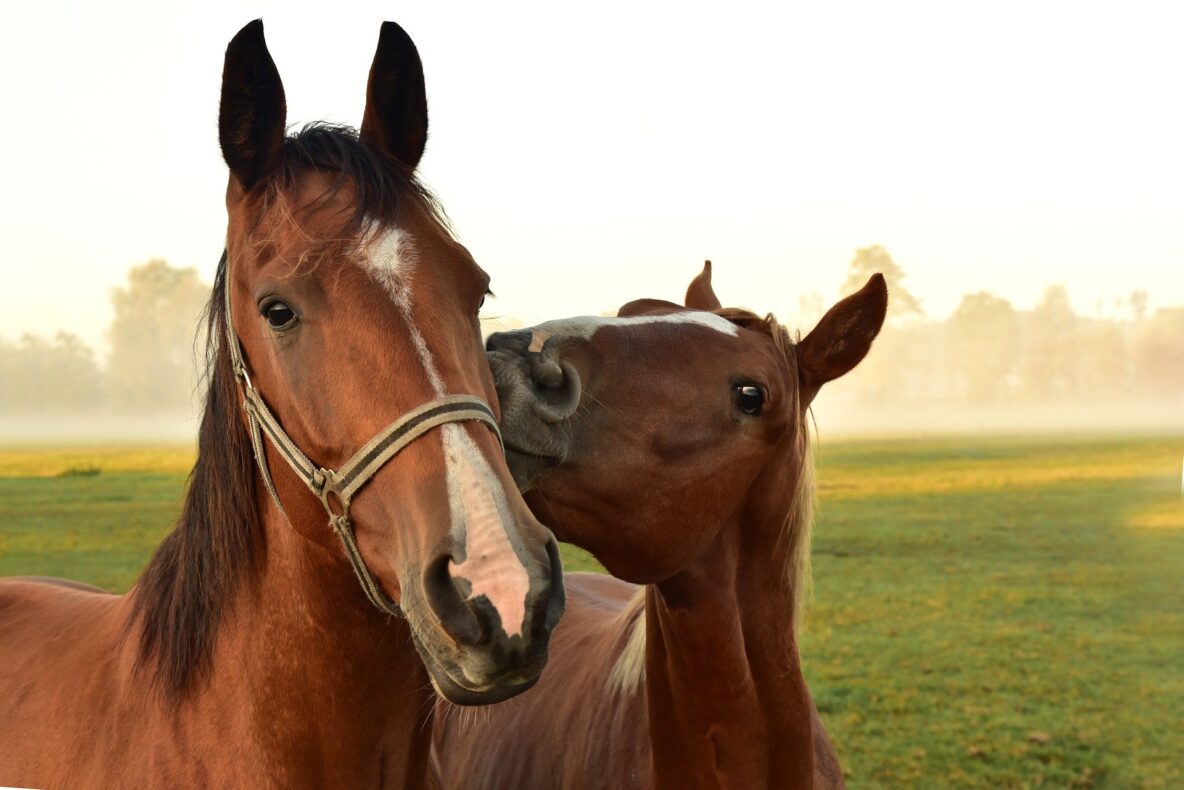Equine gastric ulcer syndrome (EGUS)
Describes the erosion of the horse’s stomach lining due to prolonged or excessive exposure to acid produced by the stomach. Any horse can suffer from gastric ulceration, from elite performance horses to pleasure horses and ponies.
Signs of gastric ulceration
Signs are very variable and differ from horse to horse but may include:
- poor appetite
- weight loss
- poor coat
- mild recurrent colic
- a change in temperament
- poor performance including poor trainability and refusing to go forward from the leg.
Causes
Diet
Cells in the horse’s stomach continually secrete acid. In the wild, horses constantly graze, supplying a trickle of grass and saliva which buffers the acid. With modern management, horses and ponies often have periods without food, but stomach acid is still produced and this excess acid may cause gastric ulceration. Feeding a diet rich in cereals also further increases stomach acidity.
Exercise
During exercise, acid which is produced in the lower part of the stomach, may splash up onto the sensitive upper part of the stomach.
Stress
Sick horses and foals as well as horses on certain medications are at higher risk of gastric ulcers. Transportation, relocation, hospitalisation and a change in management can also increase the risk of gastric ulceration.
Diagnosis
The diagnosis of gastric ulcers requires examination of the stomach using a specialised three metre long flexible camera called a gastroscope.
Gastroscopy is a very simple procedure which can be performed under sedation and completed relatively quickly.
The endoscope is passed up the horse’s nose and down into the stomach. The vet can then view the horse’s stomach lining.
The stomach needs to be empty so horses must be starved for 16 hours and water withheld for two hours prior to gastroscopy.
Treatment
Omeprazole is the only licensed treatment for gastric ulceration in the UK.
It is very effective in both treatment and at a lower dose for prevention.
There is no withdrawal period for competition under FEI regulations.
Horses racing under British Horseracing Authority rules are not allowed to compete on treatment.
Ulcers in the lower (mucosal) area of the stomach lining may additionally be treated with sucralfate which provides a protective coating over the ulcer to assist healing.
Some types of ulceration are associated with bacterial infection and may require antibiotic treatment.
Prevention
- Roughage is vital in the horse’s diet.
- Regular turnout at grass will help to prevent ulcers.
- When stabled, frequent provision of hay or haylage will promote a natural eating pattern.
- Increasing the fibre content and reducing the carbohydrate content of feed, will help to prevent ulcer formation.
- Some antacid-type supplements may help to reduce signs and recurrence of ulcers.
- Small amounts of fibre, such as a handful of alfalfa or chaff, fed before exercise may help to stimulate saliva production to neutralise the acid and provides a mat in the stomach to absorb the acid.
- Addition of vegetable oil to the diet (up to 200ml twice daily) can benefit protection of the mucosal region of the stomach. Introduce slowly to the diet to prevent diarrhoea and be aware of increased calorie content.
- A low dose of omeprazole will effectively prevent the recurrence of gastric ulceration.

